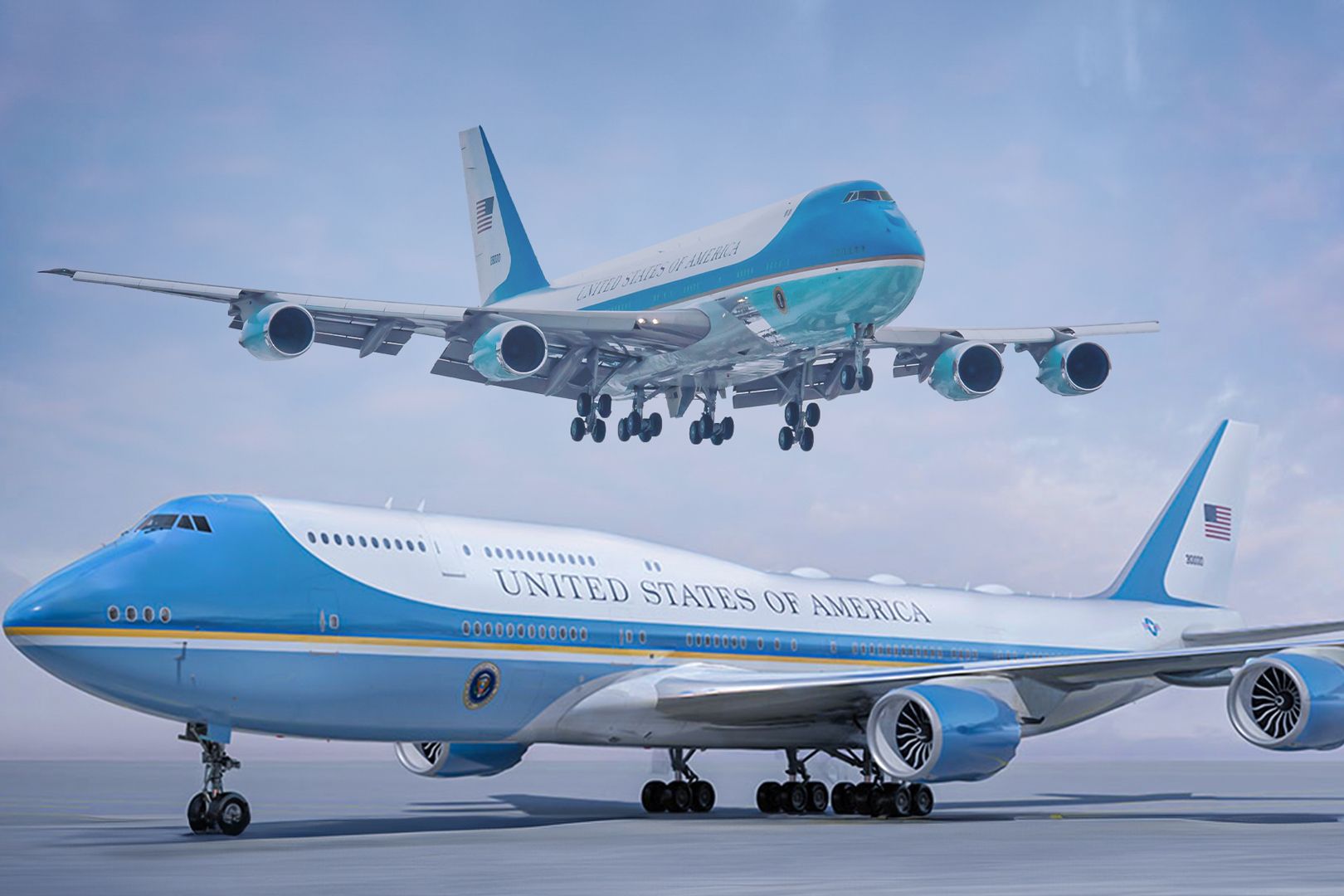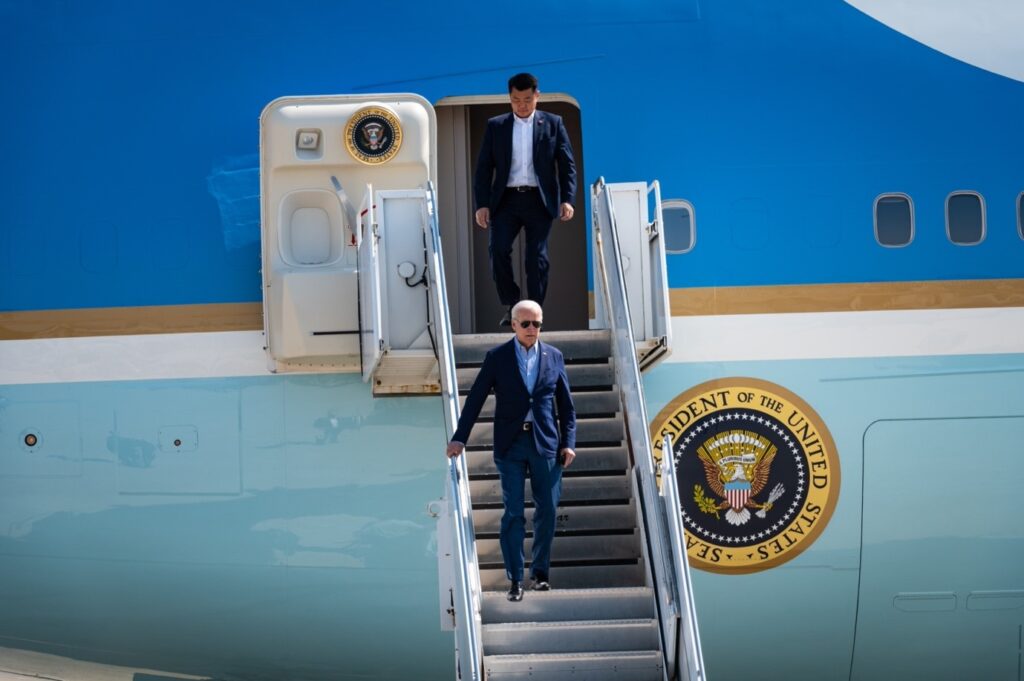A Look Back at the Fascinating History of Air The majestic tale of Air Force One history does not begin with the sleek blue and white Boeing 747 that graces runways today. Its origins are rooted in necessity, evolving from the rudimentary aircraft of World War II into the airborne command center of modern presidencies. Long before it was cloaked in its iconic livery, the concept of a dedicated presidential aircraft was merely a logistical solution—a safer, swifter alternative to terrestrial travel for the Commander-in-Chief.
During the 1940s, as air travel surged into mainstream relevance, President Franklin D. Roosevelt became the first sitting U.S. President to fly while in office. The aircraft, a modified Douglas C-54 Skymaster christened the “Sacred Cow,” carried Roosevelt to the historic Yalta Conference in 1945. Though primitive by today’s standards, this aircraft symbolized a pivotal moment in Air Force One history—ushering in the age of airborne diplomacy.
The Sacred Cow was more than a vessel; it was a floating fortress of political gravitas, complete with an onboard elevator to accommodate Roosevelt’s wheelchair. This rudimentary yet groundbreaking aircraft set the precedent for future airborne presidential endeavors.

From Sacred Cow to Independence: The Truman Legacy
President Harry S. Truman inherited more than just Roosevelt’s unfinished policies; he also inherited his flying chariot. However, Truman soon upgraded to a new aircraft, aptly named the “Independence” after his Missouri hometown. This propeller-driven marvel featured a custom interior adorned with patriotic motifs, symbolizing the President’s connection to the American heartland.
The Independence was more than a mode of transport—it was a symbol of post-war optimism. Truman’s use of the aircraft during pivotal global engagements marked a defining chapter in Air Force One history. The Independence carried Truman to critical summits, bridging continents and ideologies while fostering American diplomacy.
The Eisenhower Era: Where Form Meets Function
Dwight D. Eisenhower, a military strategist turned statesman, revolutionized the concept of presidential air travel. His administration heralded the dawn of jet-powered aviation, transitioning from propellers to turbines with the introduction of the Lockheed VC-121E Constellation, nicknamed “Columbine III.”
Yet, the real game-changer came in 1959 when Eisenhower commissioned a Boeing 707 Stratoliner, marking the first jet specifically designed for presidential use. This gleaming bird, with its unprecedented speed and range, reshaped Air Force One history by enabling swift global engagement.
Interestingly, it was during Eisenhower’s presidency that the term “Air Force One” was officially designated. A near-miss incident with a commercial aircraft sharing the same call sign underscored the need for a unique identifier. Thus, “Air Force One” became the moniker for any Air Force aircraft carrying the President, cementing its place in aviation lexicon.
Kennedy’s Airborne Camelot
When John F. Kennedy took office in 1961, he brought with him a flair for aesthetics and a keen understanding of public perception. Under his directive, industrial designer Raymond Loewy reimagined the aircraft’s visual identity. The resulting design—a sleek livery of blue and white with the presidential seal—transformed the aircraft into an emblem of American prestige.
Kennedy’s Boeing 707, designated VC-137C, was not merely an aircraft. It was an airborne Oval Office. Equipped with advanced communications systems and plush interiors, it reflected the sophistication of the Kennedy administration. The aircraft became a stage for pivotal moments in Air Force One history, including Kennedy’s fateful trip to Dallas on November 22, 1963.
It was aboard this aircraft, parked on the tarmac at Love Field, that Lyndon B. This somber event immortalized the aircraft in both history and the collective American memory.
Johnson and the Power of Mobility
President Lyndon B. Johnson, a political titan renowned for his dynamic leadership style, recognized the strategic value of Air Force One. His “Great Society” initiatives and efforts during the Vietnam War required constant mobility, and the aircraft provided the perfect conduit for his far-reaching agenda.
Johnson’s use of Air Force One during his international tours, including visits to Southeast Asia, reinforced its role as a critical tool of diplomacy and power projection. The aircraft became an extension of his office, a high-altitude command center from which he orchestrated military strategies and fostered alliances.
Under Johnson’s tenure, Air Force One history evolved beyond symbolic gestures. It became an indispensable asset in the execution of U.S. foreign and domestic policy, blurring the lines between governance and geography.
Nixon’s Pivotal Flight to China
Richard Nixon’s presidency is often remembered through the prism of Watergate, yet his groundbreaking visit to the People’s Republic of China in 1972 remains one of his most enduring legacies. This diplomatic overture, orchestrated aboard Air Force One, was a watershed moment in global politics.
The flight to Beijing, shrouded in secrecy and laden with geopolitical implications, showcased Air Force One’s role in facilitating historical detente. Nixon’s journey opened the door to U.S.-China relations, shifting the global balance of power and adding a monumental chapter to Air Force One history.
Ironically, Nixon’s final flight aboard Air Force One symbolized the other end of the political spectrum. Following his resignation in 1974, he departed the White House for California aboard the very aircraft that had once carried him to diplomatic glory. As soon as Gerald Ford was sworn in, the plane’s call sign was downgraded mid-flight, encapsulating the fleeting nature of power.
The Technological Renaissance: Reagan and the 747s
The 1980s heralded an era of modernization. President Ronald Reagan, ever the showman, oversaw the introduction of the Boeing 747-200B series as the new face of Air Force One. These behemoths, designated VC-25A, redefined presidential air travel with unmatched technological prowess and luxurious appointments.
Outfitted with cutting-edge communications systems, medical facilities, and defensive countermeasures, the 747s epitomized the synthesis of security and sophistication. Their expansive interiors featured conference rooms, private presidential suites, and press briefing areas, encapsulating a microcosm of the White House at 35,000 feet.
Reagan’s Cold War diplomacy, including pivotal summits with Mikhail Gorbachev, often unfolded within the confines of this airborne command center. These engagements underscored the aircraft’s vital role in geopolitical maneuvering, further enriching Air Force One history.
George H.W. Bush and the Global Stage
The presidency of George H.W. Bush was defined by seismic global shifts—the fall of the Berlin Wall, the dissolution of the Soviet Union, and the Gulf War. Air Force One became a vital asset in navigating these tumultuous waters.
Bush’s diplomatic finesse often found its expression aboard the aircraft, as he traversed continents to build coalitions and foster new alliances. The aircraft’s enhanced capabilities allowed Bush to respond to global crises in real time, ensuring the United States remained a pivotal player on the world stage.
One of the more poignant moments in Air Force One history occurred during Bush’s presidency when the aircraft carried him to Berlin after the Wall’s collapse. His presence symbolized not just American victory in the Cold War, but also the aircraft’s enduring role in chronicling history.
Clinton and the Dawn of Globalization
Bill Clinton’s presidency coincided with the rise of globalization and the digital revolution. Air Force One, already a symbol of American power, adapted to this new era by becoming a nexus of global communication and diplomacy.
Clinton’s extensive foreign travels, from peace negotiations in the Middle East to economic summits in Asia, were facilitated by the aircraft’s unparalleled mobility and technological sophistication. The aircraft became a dynamic office-in-the-sky, enabling Clinton to govern without geographic constraints.
Perhaps more than any predecessor, Clinton utilized Air Force One as a bridge between nations, cultures, and ideologies. His administration’s emphasis on international cooperation was reflected in the aircraft’s continuous presence at the heart of global affairs, further enriching Air Force One history.
George W. Bush: Crisis and Continuity
In the aftermath of the September 11 attacks, President George W. Bush’s use of Air Force One took on a new, urgent significance. On that fateful day, the aircraft became a secure sanctuary as the President navigated an unprecedented national crisis.
The VC-25A’s advanced defense systems and communications infrastructure allowed Bush to coordinate emergency responses while in transit. Air Force One was transformed into a flying fortress, embodying both the vulnerability and resilience of the nation.
Bush’s tenure highlighted the aircraft’s critical role in ensuring continuity of government during times of turmoil. Its ability to function as a mobile command center in the face of existential threats added yet another layer of gravitas to Air Force One history.
Obama’s Global Outreach and Symbolism
Barack Obama’s presidency brought renewed vigor to Air Force One’s legacy. As the first African-American President, Obama’s travels aboard the aircraft carried profound symbolic weight. His global outreach initiatives, including the Paris Climate Agreement and normalization of relations with Cuba, were facilitated by the aircraft’s unmatched reach and capabilities.
Obama’s deft use of Air Force One as a platform for soft power diplomacy redefined its role in the 21st century. His administration leveraged the aircraft’s media presence to project American ideals of hope, inclusivity, and leadership on a global scale.
The aircraft’s sleek silhouette against foreign skylines became emblematic of a new era of American diplomacy, further enriching the tapestry of Air Force One history.
The Present and Future: A New Generation Takes Flight
As administrations change, so too does the aircraft that serves them. The upcoming introduction of the VC-25B series represents the next evolutionary step in Air Force One history. These state-of-the-art aircraft will offer enhanced defense mechanisms, greater fuel efficiency, and advanced cyber capabilities, ensuring the aircraft remains a formidable symbol of American power.
Beyond technological advancements, the legacy of Air Force One lies in its enduring symbolism. It is more than an aircraft—it is an airborne extension of American ideals, a vessel of diplomacy, and a chronicle of history in motion.
Conclusion: An Enduring Legacy Aloft
From its humble beginnings as a modified transport plane to its current incarnation as a high-tech command center, Air Force One history is a testament to the evolving nature of leadership, diplomacy, and technological prowess. Each President who has graced its cabin has added a chapter to its illustrious story.
As it soars through the heavens, Air Force One remains an indelible icon of American prestige and a living chronicle of history aloft. Its journey continues, carrying the hopes, ambitions, and gravitas of a nation on wings of steel and resolve.



